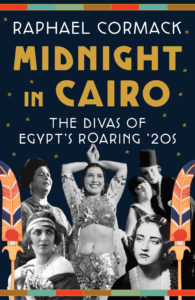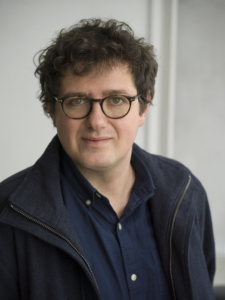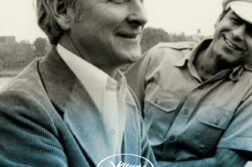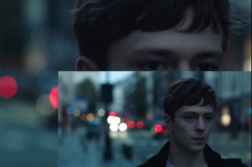IN 1929 Egyptian journalist Karim Thabet toured Berlin’s decadent nightlife. He sent back a report to a magazine in Cairo about the famous Eldorado nightclub with its nightly performances that we might today describe as drag. Thabet found the performers, in their high heels and low-cut dresses, strange but impressive; he even republished the souvenir photo he had taken home from the club of a dancer sitting with a small black dog.
I study the nightlife of 1920s and ’30s Cairo and I often get asked: was there a queer scene there like there was in Berlin? Did Cairo have any clubs like the Eldorado? It turns out to be a very complicated question to answer.
Arabic culture has a long history of same-sex desire and gender fluidity. Some of the greats of classical Arabic poetry – including but certainly not limited to the legendary Abu Nuwas – reveled in open discussions of homosexual attraction and liaisons. People in Cairo in the early 20th century could look back to a rich queer tradition that was different from Berlin’s. It’s a tradition that doesn’t match European ones, with fundamentally different conceptions of sexuality and gender. To understand modern Cairo we must take it on its own terms. To answer questions about Cairo’s queer history, I have started to build a small archive of material from the late 19th and early 20th centuries.

There are several instances of same-sex relationships. Perhaps the most prominent was the well-known romantic and eccentric member of the Egyptian ruling family Princess Jamila, who drove around Cairo in a gilded carriage dressed in military uniform and avidly read and wrote mystical poetry. Her sexual affairs with other women were well documented in both British and Egyptian sources, but her life ended tragically early. Having been through three unhappy marriages, she died in 1896 while still in her twenties.
Louis Awad, who went on to become a successful writer, journalist, editor, and translator, cut his literary teeth in the cafés of Cairo’s nightlife district in the 1920s and 1930s. In his memoirs, written in the 1980s, he recalled the rumors of sexual relationships between writers.
Same-sex love stories from non-Arabic-speaking writers from the early 20th century also existed. E.M. Forster famously fell in love with a conductor on one of Alexandria’s trams, Mohammed El Adl. Ten letters from El Adl to Forster still survive in the Kings College archive in Cambridge. And, of course, there is C.P. Cavafy, perhaps the most famous gay poet of the 20th century, although he is not usually read as an Egyptian poet. There are also travelers’ tales of same sex encounters, like André Gide’s posthumously published diaries from 1939. However, there is often something uncomfortable about these kinds of stories: The background of colonialism and uneven power relationships muddy the waters of consent. Furthermore, none of these writers seems to have ventured into Cairo’s nightlife scene.
There were also many people in Egypt playing with conventional gender binaries. Karim Thabet might have been taken aback when he saw the performers at the Eldorado in Berlin, but he could have seen the same in Cairo. There was one popular Egyptian dancer at the time called Hussein Fouad, who, according to one British police officer, “danced always in the dress, ornaments, hair, lipstick, and manners of a woman, and people who watched for the umpteenth time could hardly be made to believe [Fouad] was not [how Fouad]appeared.” In the theater, actors played roles of characters from other genders, many of whom became known best for those roles. Women, both actors and not, would organize photoshoots of themselves in drag, which filled the pages of theatrical magazines.
Gender in Egypt looked fluid and complex off-stage as well. Many ordinary people lived outside the genders they were assigned at birth. In her memoirs, the belly dancer Tahiyya Carioca told the story of her sibling, her father’s first child. Her father was a sailor and wanted a son so much that he dressed his child up in male clothing and took her on his ship with him. According to Tahiyya, her sibling lived most of her life as a man. One of Cairo’s most notorious brothel owners, Ibrahim al-Gharbi, was also well known for wearing dresses, make-up, jewelry, and a white veil. In 1930, a woman called Hamida was taken into a police station in central Cairo. She had been found wandering the streets. The police insisted they knew her gender and slapped her until she confessed her former name, which revealed she’d been assigned male at birth.
These isolated examples are difficult to connect to a larger story, a difficulty that gets at one of the major problems about writing the queer history of Cairo and perhaps about writing queer history of the early 20th century at all: Who records the historical lives of LGBT people?

In his book When Brooklyn Was Queer, Hugh Ryan notes that in New York in the early 20th century, queer people were treated as either criminal or mentally ill, so the vast majority of information is found in either police or medical records. He notes the irony that, although these sources are almost always hostile, they are “an incomparable resource to historians of sexuality” and “contain information that would otherwise have gone completely unrecorded.”
Cairo was different. Unlike in America and most countries in Europe, homosexuality was not a crime in Egypt. Therefore, LGBT stories do not survive in either police records or court transcripts. Although I have gone over many of the records from Cairo’s mental hospital in the 1920s and ’30s, they make no mention of homosexuality or different gender identities. There was no moral panic about queer people in early 20th-century Egypt—as there was about drugs, loose women, and even suicide—so there are not even panicked reports in the newspapers to rely on. Homosexuality as an identity might not even have made sense at the time.
This is not to say that Cairo was a queer paradise in the 1920s. Transgressive behavior was often swept under the rug or surrounded by silence. When Louis Awad remembered the rumors of “sexual deviance” among the writers of his youth, he was keen to stress that artists and writers were not alone in it, but that they just “did things in the open that others did in secret.” Queer life in Cairo was not openly discussed. It is striking that in almost all of the stories I have told, the voices of the subjects themselves do not survive. (The letters of Mohammed El Adl and the story of Hamida are the only cases where any of their own words still exist.) We only hear about them through others.
So, how could you write a queer history of Cairo’s roaring twenties? You cannot look for sources in the same places as historians do in Berlin or New York. People need to use creative strategies and look in unexamined places to uncover these lost voices. Equally, we should not necessarily expect the stories to look the same. It may be that Cairo in the 1920s had many things in common with earlier Arabic traditions, such as those in classical Arabic erotic poetry. It may be that queer practices, which are the subject of controversy now, were more normalized. By keeping my eyes open, I discovered many traces of queer life in Cairo. But until someone finds sources that can let the subjects speak for themselves, we are left to speculate.

Raphael Cormack has a PhD in Egyptian theatre from the University of Edinburgh and is currently a visiting researcher at Columbia University. He is an award-winning editor and translator and has written on Arabic culture for the London Review of Books and elsewhere.






Discussion1 Comment
I lived In Cario from mid 90s to 2020 approximately five years I am originally from Newyork a resident of London now .living in Cario at that time was one of best experiences of my life…., gay night life was amazing under Mubarak ,actively around six gay clubs on going throughout the week, amazingly! one anchored on the Nile, a ship,with one of the best DJs I ever heard could easily compete with Macouscos loft of 70s New York era not to mention mixed bars and clubs well over a dozen places so much gay activity an freedom I considered buying a apartment and moving permanently
Haveing lived / party in NY from late 6os all through 70s an part 80s includeing studio 54 I can say Cario was in the top League at that time . It’s a shame to hear of the turmoil, killings and imprisonment of gay people now, my experience was under a much more tolerant regime.